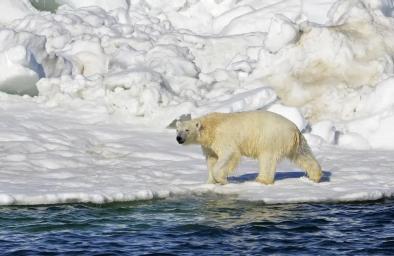Science Source
Attributing Causes of 2015 Record Minimum Sea-Ice Extent in the Sea of Okhotsk
- States that in 2015, the sea ice extent (SIE) over the Sea of Okhotsk (Okhotsk SIE) in the Arctic hit a record low since 1979 during February–March, the period when the sea ice extent generally reaches its annual maximum
- To quantify the role of anthropogenic influences on the changes observed in Okhotsk SIE, this study employs a fraction of attributable risk (FAR) analysis to compare the probability of occurrence of extreme Okhotsk SIE events and long-term SIE trends using phase 5 of the Coupled Model Intercomparison Project (CMIP5) multimodel simulations performed with and without anthropogenic forcing
- Finds that because of anthropogenic influence, both the probability of extreme low Okhotsk SIEs that exceed the 2015 event and the observed long-term trends during 1979–2015 have increased by more than 4 times (FAR = 0.76 to 1)
- Finds that a strong negative phase of the North Pacific Oscillation (NPO) during midwinter (January–February) 2015 also contributed to the 2015 extreme SIE event
- Conducts an analysis based on multiple linear regression to quantify relative contributions of the external forcing (anthropogenic plus natural) and the NPO (internal variability) to the observed SIE changes
- Finds about 56.0% and 24.7% of the 2015 SIE anomaly was estimated to be attributable to the external forcing and the strong negative NPO influence, respectively
- Finds the external forcing explains about 86.1% of the observed long-term SIE trend
Related Content
Science Source
| Nature
Regime shift in Arctic Ocean sea ice thickness
Headline

Feb 21, 2023 | Climate Nexus Hot News
Ice Absent From Great Lakes, New England
Headline

Feb 16, 2023 | Climate Nexus Hot News
Antarctic Sea Ice At Lowest Recorded Levels, Again; Thwaites Glacier's Weak Spots Getting Weaker
Headline

Jan 25, 2023 | Climate Nexus Hot News
Melting Sea Ice Could Increase Threatens Polar Bears, People


